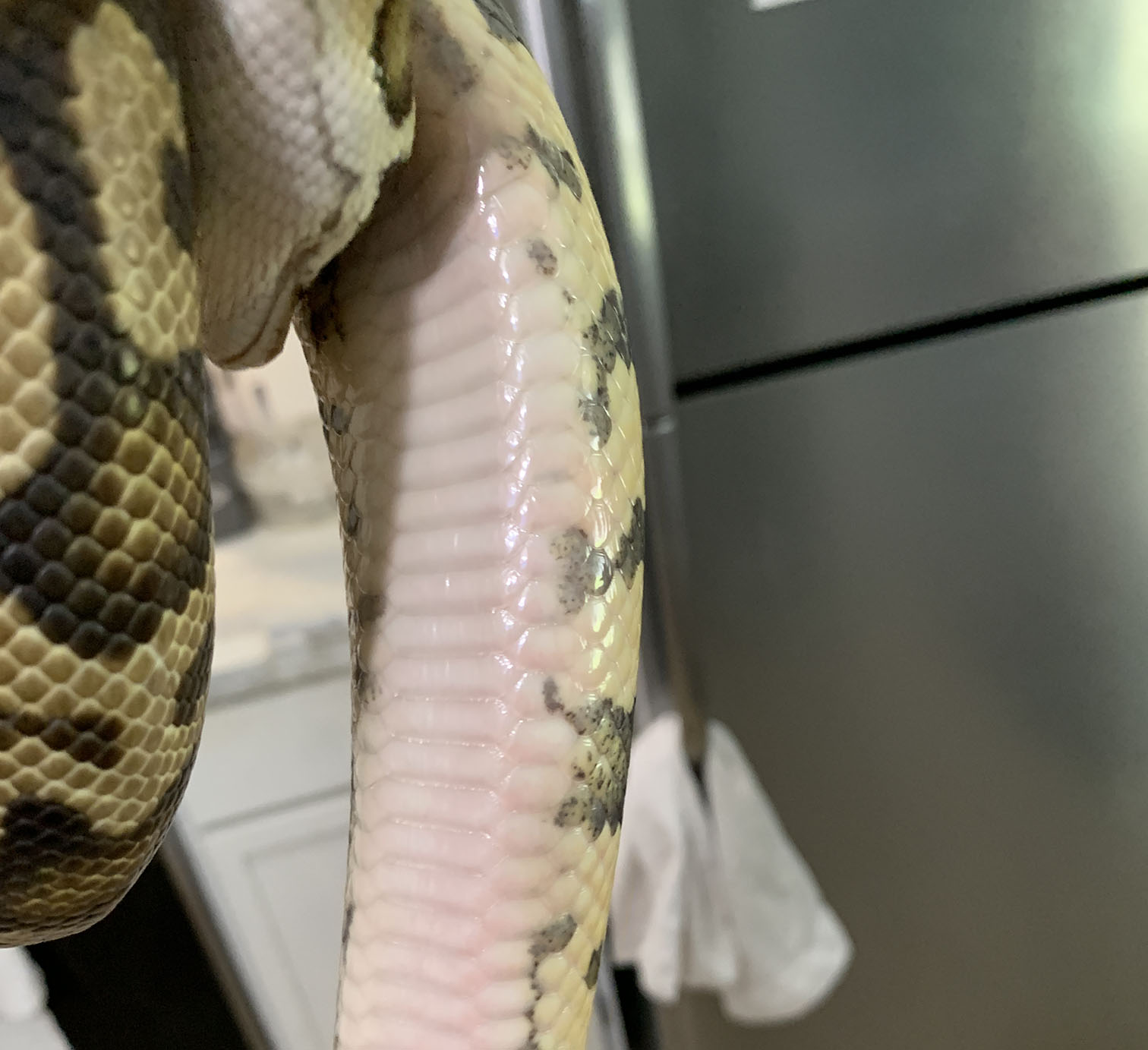Not eating?
Ball pythons have a reputation for being poor eaters, or for suddenly not eating for long periods of time for no apparent reason. Many snakes in fact will do this, and there are various reasons for it.
In general, snakes will go off feed if there is something wrong with their environment or if they are not feeling well. Therefore it is always important to check your temperatures and humidity first whenever you have a concern about your snake’s feeding behavior. For example, temperatures that are too cold are insufficient for a snake to digest food, so they may regurgitate food or stop eating.
A dehydrated snake will also have trouble getting food down, so if your snake is not drinking (or has escaped!) it is important to address this first.
Weather changes
Next, snakes are very sensitive to barometric changes and changes in weather. Have a big storm or hurricane approaching? They probably know it. Snakes may eat more voraciously or not at all during this time.
Weather changes can also stimulate breeding behavior (see below).
Breeding mode
Change in feeding behavior may also be linked to breeding behavior, so when these things happen your females may become more ravenous, and your males may look at a rat as an intruder, completely ignore it, or climb over it to try and get out of the enclosure and onto your lap.
When in breeding mode, some males will stop eating for months at a time. As long as their weight is steady or only drops a couple of grams every few months, this is fine. Offer them food periodically anyway. Some fasting males will eat every once in a while, others not at all. When hitting puberty, young males will often forget that the thing coming in is food and behave oddly—they may push on the food with one of their coils, for instance, to try and get it away (some females in breeding mode may do this too!). Be patient with these little guys. Sometimes you can wiggle the food to get their attention, and then leave it in the cage with them for a while. Eventually they will realize you aren’t a competing male.
New snakes may stop eating because their environment is new and scary—this is why it is recommended to wait a week before handling new additions. You should also probably a few days before attempting to feed.
This stress can also happen when moving a snake to a new enclosure or a new room (Snakes are individuals—your mileage may vary). As long as the snake’s husbandry is good, and they have plenty of hiding spots, they will eventually settle down and should start to eat. If they are not eating, check for urates—this will show that the snake is at least drinking water. Again, keep an eye on weight.
Young snakes should be eating. After the introductory period--if the new, young snake goes a month without feeding, and husbandry is correct, and you have exhausted all your feeding methods, there may be something more that a veterinarian should address.
In Shed
When a snake is going into shed, it may not eat, may lose interest in food, or may become offended at your attempts to feed it. Going into shed initially may look like a pink color on the belly (not part of the snake’s usual color), then followed by a dulling of their overall color, giving them a “blue” or “frosty” look. Finally, their eyes will turn white.
Snakes in shed cannot see very well, and even good feeders may refuse at this time, either because they cannot see or because they are not feeling well. If your snake does feed while in shed, I recommend offering a smaller meal than usual.
If they don’t want food, this is not really a problem. Wait until they have shed, then offer food again.




